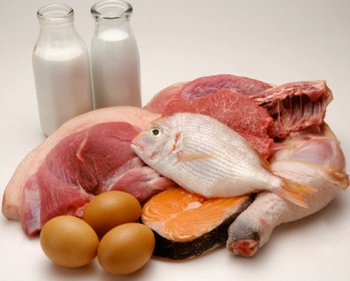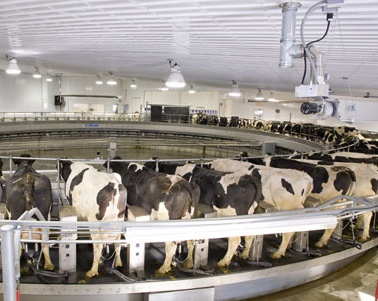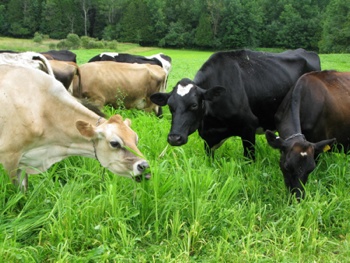Right now we all have a choice as to what we eat (at least for anyone reading this blog), and we pretty much take that for granted. But what if those choices became pretty limited in the future?
Recent research by the Stockholm Water Institute caused water scientists to project that, in order to avoid critical food and water shortages, the entire population may need to switch to an almost exclusively vegetarian diet by the year 2050. Isn’t it fascinating that what is good for us is naturally good for the planet? An all or high plant-based diet is the most healthful diet to maintain health and beauty, truly the foods for energy. And now, the fact that this type of diet is infinitely less taxing on Mother Earth is becoming more widespread.
Worldwide, people consume approximately 20 percent of their protein intake from animal sources, with this number being significantly higher in the United States. A nutrition examination survey conducted between 1988 and 1991 showed Americans consumed about 69 percent of their protein from animal sources. Further, the United Nations Food and Agricultural Organization estimates that global meat production will more than double between 2001 and 2050, as will milk production.
These are downright FRIGHTENING numbers that we all need to be aware of. Read on.
The Environmental Costs of Meat Consumption

Animal protein requires significantly more water to produce than plant-based foods. In fact, the number is estimated to be as high as 5 to 10 times more water required for animal protein production than plant protein production. Raising massive amounts of livestock for feed also causes pollution of water resources, filling them with animal wastes, hormones, antibiotics, tannery chemicals, and feed crop fertilizers and pesticides. This pollution has wide-ranging effects on both fresh and saltwater sources, causing coral reef degeneration and dumping phosphorous and nitrogen into waterways that kills organisms, diminishing biodiversity.
Raising livestock for food has other impacts on the environment, as well. Raising livestock generates 18 percent more greenhouse admissions than transport and degrades both land and groundwater, according to the United Nations Food and Agriculture Organization. The report also states that livestock currently uses 30 percent of the whole planet’s land surface for pasturing, and 33 percent of the earth’s arable land to grow livestock feed. In Latin America, a full 70 percent of former Amazon forests now serve the livestock industry.
I believe everything is connected. The microcosm gives a picture of the macrocosm. As people’s bodies become clogged and acidic with eating so many animal products on a micro level, the earth on a macro levels becomes toxic from having to provide such a high amount of such resources, which are completely out of balance. We all suffer.
Factory Farming

Since space is at a premium in CAFOs, it is an advantage for the animals to reach maturity for slaughter as quickly as possible. To accomplish this, CAFO operators use hormones to facilitate faster growth.
Another problem inherent with factor farming is waste disposal. With massive amounts of animal waste (which is contaminated with drugs and hormones) being generated in a very small space, CAFOs are faced with the dilemma of how to dispose of it. The solution to this problem is often animal waste lagoons holding millions of gallons of contaminated waste, which can leak into groundwater, further degrading and contaminating the water supply.
I don’t judge you if you want to keep some animal products in your diet. I believe everyone has to make changes when they are ready- it can’t be forced. Many of my clients eat some meat. But I do recommend that you eat far less than you may currently be eating- cutting down to 1-3 times a week maximum. But if you’re on the fence about whether to give up animal products completely or not, just watch some footage from a factor farm. You won’t want to eat it- at least for a long while- once you become conscious of what you are really eating.
The Solution

Fortunately, you can get all of the protein you need from plant sources. I promise. I’ve talked about this quite a lot in The Beauty Detox Solution, so please read or re-read the in-depth discussion there. Aside from the personal health benefits, however, switching to a plant based diet can also significantly impact the planet and future generations as you participate in a solution to reduce coming worldwide food and water shortages. Along with switching to a plant based diet, you can take the following steps:
- Demand organic foods, which reduce toxicity in the environment and ground water.
Eat local and seasonal as much as possible. Eating foods out of season – even plant foods – ramps up the environmental cost due to the transportation and refrigeration required to get those foods from wherever they are produced to your table. You can find local produce by visiting a farmers’ market or joining a local CSA (community-supported agriculture) program. Visit localharvest.org to locate a farmers’ market or CSA program in your area.
- Support small local farmers, who produce high-quality foods but struggle to compete in the age of huge corporate agri-businesses and factory farms.
- If you do eat animal protein, minimize your intake to one – three times per week and support organically raised livestock from non-factory (small local) farms. You can find such farmers at your local farmers market or by visiting www.eatwild.com.
We are all connected and we we can’t afford to just turn a blind eye to this serious issue. Please share this blog and spread this information. This is not just an ideological issue- it is a major health and environmental one as well.

 Eat local and seasonal as much as possible. Eating foods out of season – even plant foods – ramps up the environmental cost due to the transportation and refrigeration required to get those foods from wherever they are produced to your table. You can find local produce by visiting a farmers’ market or joining a local CSA (community-supported agriculture) program. Visit
Eat local and seasonal as much as possible. Eating foods out of season – even plant foods – ramps up the environmental cost due to the transportation and refrigeration required to get those foods from wherever they are produced to your table. You can find local produce by visiting a farmers’ market or joining a local CSA (community-supported agriculture) program. Visit 
Hi Kim!
I previously read about this study and immediately thought about you!
I had a question about one of your previous articles concerning the CA proposition to label GMO foods. I was wondering if passing this law would have an impact on the pricing of foods and which foods in particular would be
affected?
Also, how long do you suggest soaking ground flaxseed and chia seeds?
Thanks and can’t wait for your new book! :-)
I am ready for a plant-based culture, but I have one question: If we were not intended to eat animal meat, why do we need B12 that only comes from that protein?
I believe B12 is found in nutritional yeast as well.
It’s produced in the LOWER intestines but BELOW the point of absorption.
Consider what might happen if one were FASTING occasionally rather than PUSHING the FOOD DOWNWARD through the intestines with constant eating.
And with modern hygiene, the bacterial synthesis (production) of B12 is irrelevant because whatever environmental B12 we might otherwise have absorbed is washing or scrubbed away (before marketing).
Hi Kimberly how do you adress Vitamin B12 levels being vegetarian or vegan ? I have been vegan for 1 year and my level is low. Also my HDL is low. How can I increase it ? Thanks so much.
Kimberly, I have your book and love it . I am reading it over again for the second time I was wondering if you have trouble keeping weight on if you recommend the true beauty phase? I know you said this kind of diet is good for those who want to gain weight because there are so many foods that you can eat.I eat lots of fruits and vegetables and I am guessing avocados are one of those good foods to eat to gain weight. Are protein bars good if they just have dates and nuts kind of like your raw cacao truffles in your Detox book? Can you tell me a example of a a few days worth of menus for those who have trouble keeping on weight. I am five foot tall what is a good range for weight (I weigh 90 pounds)?
I wonder if these farm conditions are just in America…. I live on my grandparents farm in Australia which is close to 1000 acres and they have cows on it. These cows walk around all day eating grass across the farm and having dips in the river. Excluding the organic farms, is what you are depicting the majority of farms in America? I’m probably going to visit next year and am now wondering if I should stay away from meat while I am there….?
Factory farms exist here in Australia too, it is not just in the USA. Your situation, living on your grandparents’ farm, is unique and does not represent the majority of meat products sold in supermarkets and butcher shops. There is no way that the millions of animals raised for human consumption both here in Australia, or anywhere else in this world, could be possible without intensive factory farming methods.
The problem with products labelled “Free Range” in the USA is that there is no independent body that determines the validity of such claims. In fact, there have been cases in Australia too where eggs have been sold as “free range” when in fact they were not at all.
The problem of course is with the voracious human appetite for these products – most people do not realise just how much they actually consume, Government recommendations for red meat, for example, are approx 100gm three times a week. Well, how many people eat bacon for breakfast, a ham sandwich for lunch, and then a steak (much larger than the 100gm recommendation) for dinner? That is three servings, just in one day. Times that by seven and you have twenty-one servings of red meat – WAY more than what is considered healthy.
No wonder Australians are getting so fat and experiencing so many diet and lifestyle related health issues.
I think vegetarian diet is religiously also good diet as no killing is involved
Hi Kimberly! I’ve been following your book for 1 year now, and I’ve had so many great improvements. I do however have a condition where I’m low in zinc and don’t seem to absorb it too well. For that reason I’m still eating animal protein 4x a week – Chicken twice and eggs twice and also take zinc supplements daily. I keep the other days vegan. I was just wondering if you had any other suggestions for better zinc absorption and also if eggs and chicken are the best choices if one is consuming animal protein? I would eventually like to eliminate it altogether or at least become vegetarian. I would also like to know if 2 tbs of chia seeds is ok daily and also if ‘brown rice’ miso is ok to use in your recipes that call for this ingredient? Thank you so much xx
A fantastic article. Thanks, Kmberly. I will be sharing this with all.
Om…
I was wondering what suggestions you might have for transitioning into a vegetarian diet. I have two young children, one in which I breastfeed (3mos old). I see the vitality, skin benefits, and organ benefits of being a vegetarian. I am constant on the go (student, employee, mom) and would love to know your advice on this! Thank you!
Rheanna
Following your health regime. Wow what a difference it has made on my life. Dropped 3 dess sizes in 9 months and have tons of energy. Reduce my meat intake to twice a week and focus on organic. Everyone is asking me what I am doing. Now I have a bunch of people starting up on Kimberly’s health plan. Plan to continue on it for the rest of my life. So glad I picked up your book on a whim.
Hi All,
For proper food combining… do you treat Nutritional Yeast as a Protein? Meaning, you shouldn’t eat it with anything other than veggies/greens? Or, is it safe to combine with any foods?
Also, for consuming raw cacao nibs; What time of day should these be eaten and how regularly, or is it better not included in my diet at all? I don’t crave chocolate – so I could easily eliminate it completely. Thanks!
Additionally, Red Wine has a much higher ANDI score than White Wine. The book simply states that “wine” is better than other alcohols. Please specify. Also – when consuming any alcohol – what is the appropriate combination? Before or after a meal? Should you modify your meals that accompany libations?
Hey Kimberly,
FIrst of all – thank you so much for your passion and knowledge – it has really taken my health and life to the next level…
I read your beauty detox solution and loved it!!
I’m some form of a “radiant beauty” and eat very little animal protein. I just had a quick question about food combining, which i now follow religiously: is pumpkin and squashes considered a starchy vegetable? I love steaming Calabaza and i wanted to know if i could have that with a piece of fish or eggs, or whether that should be eaten simply with other starches.
Thank you so much!!
My best,
Sarah
It has to be a specific brand of nutritional yeast: Red Star Vegetarian Support)4.0 mcg
and it must be stored away from light and in a cool place so the store should not be selling it off the shelf. If you are getting if from the bulk area of your grocery store the b-12 may not be present…